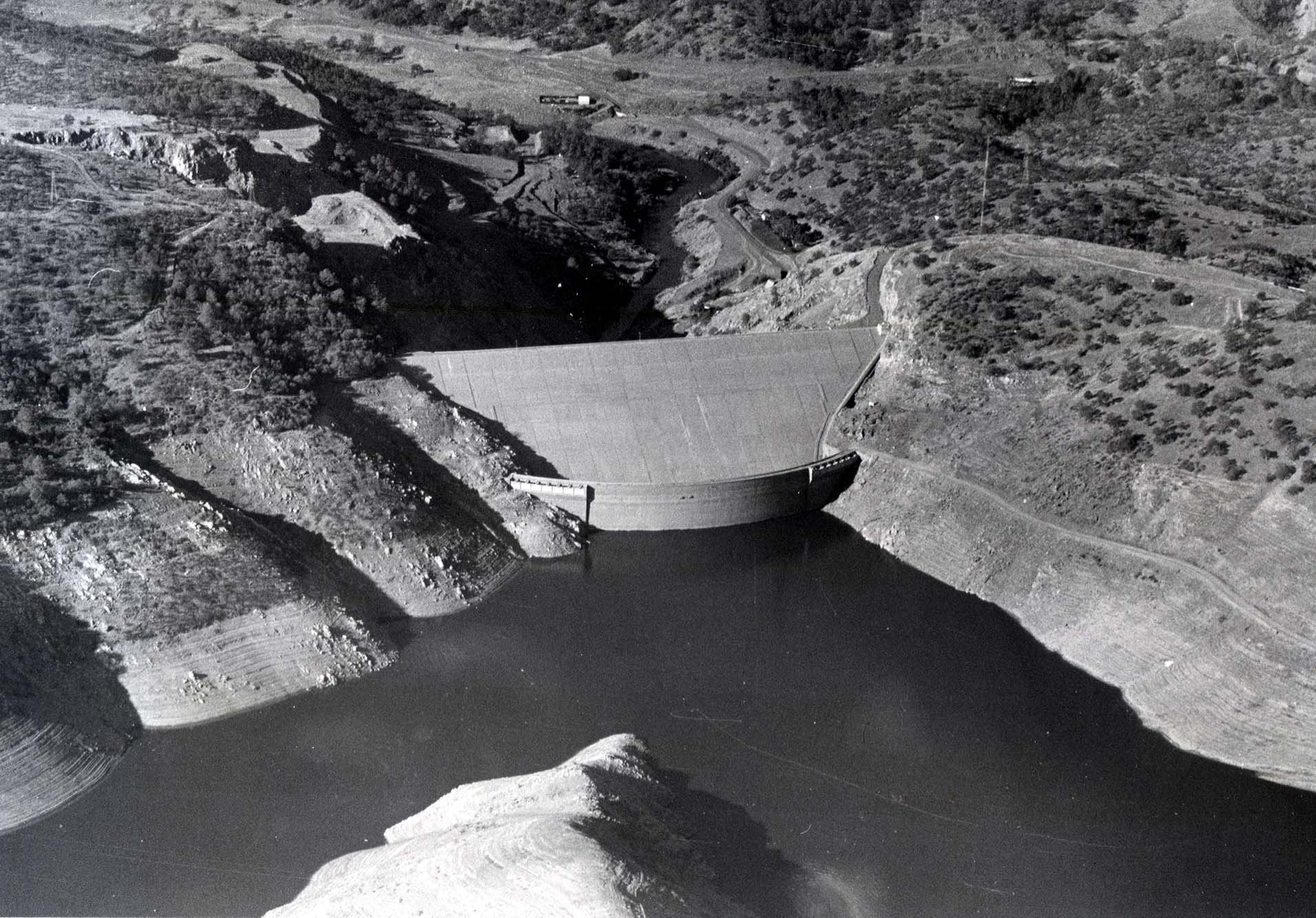On the Radar: Spillway Modification Plan
At the heart of the Upper Merced River Watershed Council’s mission is promoting the protection and enhancement of the Merced Wild and Scenic River and its watershed.
As such, our organization watches out for actions or activities that could pose a potential threat. One such action is a proposal to raise the spillway of the New Exchequer Dam, which in turn would elevate the level of Lake McClure and inundate as much as a quarter mile of the lower Merced Wild and Scenic River as it enters the reservoir. In order to pave the way, Congressional representatives introduced legislation that would effectively remove that portion of the Merced Wild and Scenic River from federal designation—an action that has never taken place in the history of the National Wild and Scenic River System.
While Congress has not taken recent action, this threat is not over. The following information is presented here to provide background and shed light on a potential project that could have far-reaching impact on not only the Merced Wild and Scenic River, but all rivers in the Wild and Scenic Rivers System.
-
The Merced Irrigation District (MID) operates the New Exchequer Dam that forms Lake McClure at the end of the Wild and Scenic lower Merced River in eastern Mariposa County. This rockfill dam, completed in 1967, was built against the original Exchequer Dam, a 300-foot-high concrete gravity dam completed by the Merced Irrigation District in 1926.
The maximum pool level, or “bathtub ring”, of the reservoir (Lake McClure), is defined by law as 867’ above sea level. This elevation therefore defines the boundary between Lake McClure and the Merced Wild and Scenic River which ends when the river falls below this elevation approximately 5 miles upriver from the bridge on HWY 49 at Bagby, and just above the confluence with Sherlock Creek. (The portions of the Merced River below the dam are not designated Wild and Scenic.)
The New Exchequer Dam is an embankment or earthen dam, and it is of critical importance that an earthen dam never be overtopped (water flowing over the top of the dam) as that can lead to rapid and catastrophic failure of the dam with release of the more than 1 million acre feet of water stored in the reservoir. This would have a devastating effect on the downstream communities of Snelling, Livingston, and likely others along the San Joaquin River.
To avoid any possibility of overtopping, dams are protected by spillways that release water well before the water level can reach the top of the dam. There are typically two spillways protecting a dam: a gated spillway were the gates can be opened and closed as necessary to maintain a safe water level, and an emergency spillway that simply spills water over the top without the need for any mechanical action or human intervention. The emergency spillway is essentially the lowest point in the land that contains the reservoir. Because overtopping the main dam would be catastrophic, the design of the dam and related spillways always contain significant safety margins, e.g., the ability to safely spill all the water entering the reservoir in a 500-year flood and without endangering public safety.
A major consideration in the safe design of the spillways is the headroom, or difference between the level of the spillways and the level of the top of the dam. By having the level of the spillway well below the level of the top of the dam, this headroom allows the water level to temporarily built up when the water entering the reservoir exceeds the ability of gated spillway to safely discharge water, and this headroom also provides hydrostatic pressure thus allowing higher flow rates over the spillway. Another important safety factor is, obviously, the ability of spillways to discharge water at a high rate without itself experiencing erosion that cause the spillway to fail, again leading to the catastrophic release downstream of the water in the reservoir.
-
Unfortunately in 2017, we all got to see how this works—or almost didn’t work—in the case of the Oroville Dam Crisis. During a heavy storm, the gated spillway could not discharge all the water entering the reservoir without itself failing. When water started to top the emergency spillway, it also started to experience significant erosion. This led to massive evacuation of downstream communities. Fortunately, the storm abated before a catastrophe happened, but it was close.
There are many lessons to be learned from this experience, and this led California to examine other dams and their spillways, like the New Exchequer Dam at Lake McClure, a sister dam to the embankment dam at Oroville. But there is no comparison of the spillways protecting the two dams – the ones at Oroville were much more substantial.
Currently there is about 12 feet of headroom between the emergency spillway and the top of the New Exchequer Dam – typical for this type of dam. In order to store an additional ~70,000 acre feet of water in the reservoir, MID is proposing raising the spillways by 10 feet, but NOT raising the dam, thus cutting the headroom down to about 2 feet and significantly reducing the safety margin with which the dam and spillways were designed. In light of the experience at Oroville, this makes no sense from a dam safety point of view, especially given the catastrophic consequences of dam failure.
Since raising the spillways would also raise the maximum pool level of the reservoir by 10 feet, it would flood an additional ~1/2 mile of what is now part of the Wild and Scenic lower Merced River when the reservoir is full. This can only happen legally if that segment of the river is removed or de-designated from Wild and Scenic Status – something that has never happened before, thus setting a terrible precedent for other Wild and Scenic Rivers.
-
In 2011 Representative Jeff Denham (R-Turlock) carried bills (H.R. 869 & 2578) and in 2013 Rep. Tom McClintock (R-Elk Grove) carried a bill (HR 934), all to remove protection from a portion of the Merced National Wild and Scenic River. The House of Representatives voted in support of Rep. Denham’s bill, H.R. 2578, in June of 2012. Rep. McClintock’s H.R. 934 was incorporated into Rep. Valadao’s H.R. 5781, which passed the House in December 2014. Neither effort was taken up in the U.S. Senate nor enjoyed Administration support.
Regardless, the threat to the Merced Wild & Scenic River is still real. Should a change in administration occur, this dormant proposed action could be reconstituted.
Additional Information
For additional information on this project and the potential threat to the Merced’s Wild and Scenic River designation, visit the following groups and resources:
VIDEO Friends of the River, “Threat to the Wild & Scenic Merced”
Archive position statement from MERG (Mariposans for the Environment and Responsible Government)




